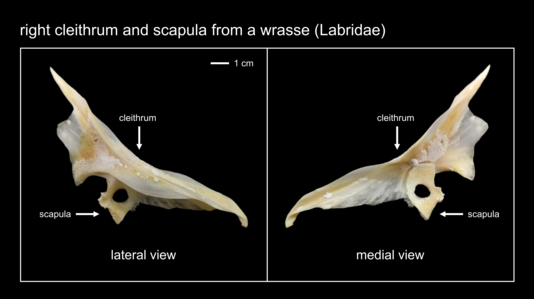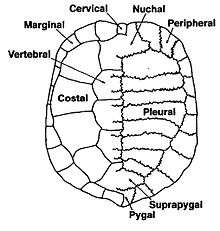Cleithrum
Appearance

The cleithrum (pl.: cleithra) is a
key (lock)", by analogy with "clavicle
" from Latin clavicula = "little key".
In modern fishes, the cleithrum is a large bone that extends upwards from the base of the
gills, forming the posterior edge of the gill chamber.[2]
The bone has scientific use as a means to determine the age of fishes.
The
lobe-finned fishes share this arrangement. In the earliest amphibians however, the cleithrum/clavicle complex came free of the skull roof, allowing for a movable neck. The cleithrum disappeared early in the evolution of reptiles, and in amniotes
is very small or absent.
It has been argued based on position, muscle connectivity, and developmental origin that the nuchal element of the turtle carapace is formed from fused cleithra.[3]

See also
References
- ISBN 0-03-910284-X.
- ^ "Fish Glossary". University of Wisconsin Sea Grant Institute. 5 February 2002. Archived from the original on 2011-03-13.
- ISSN 1520-541X.
